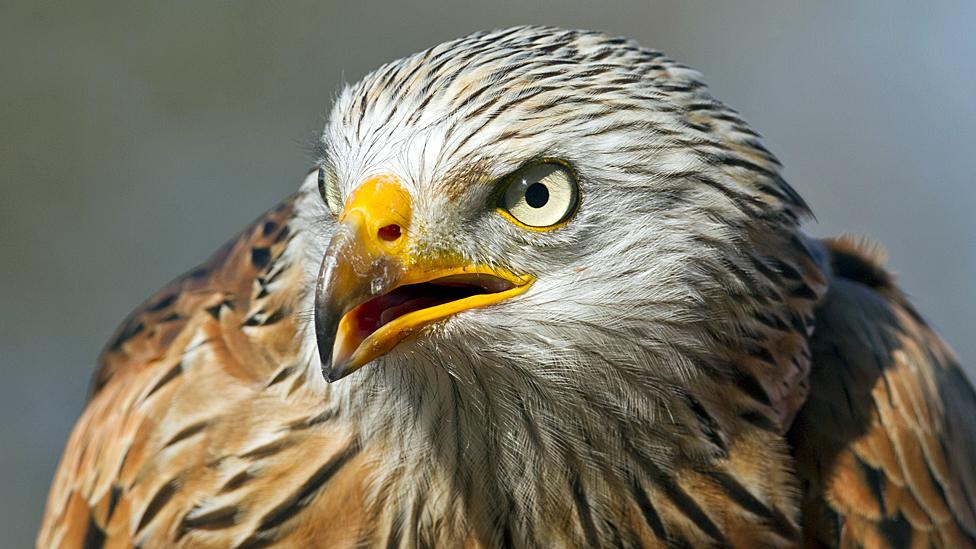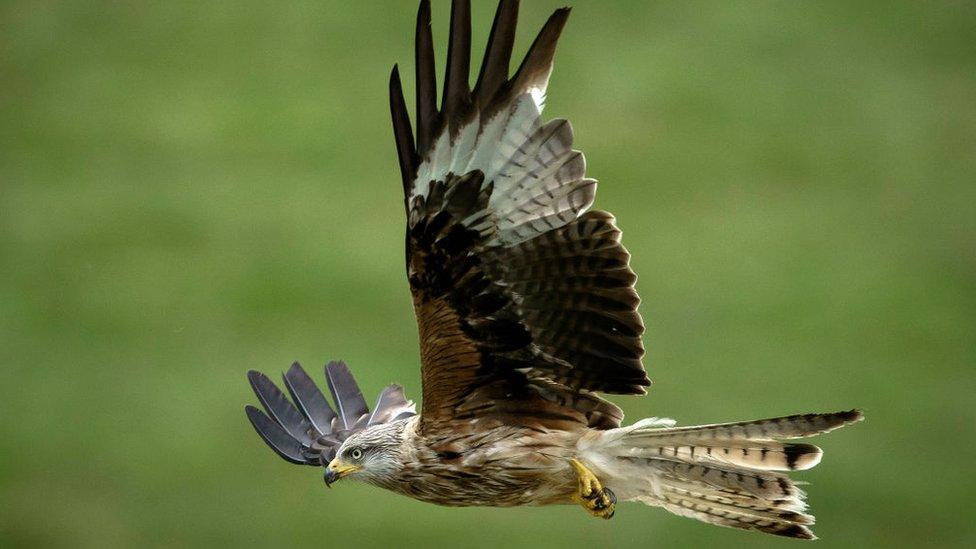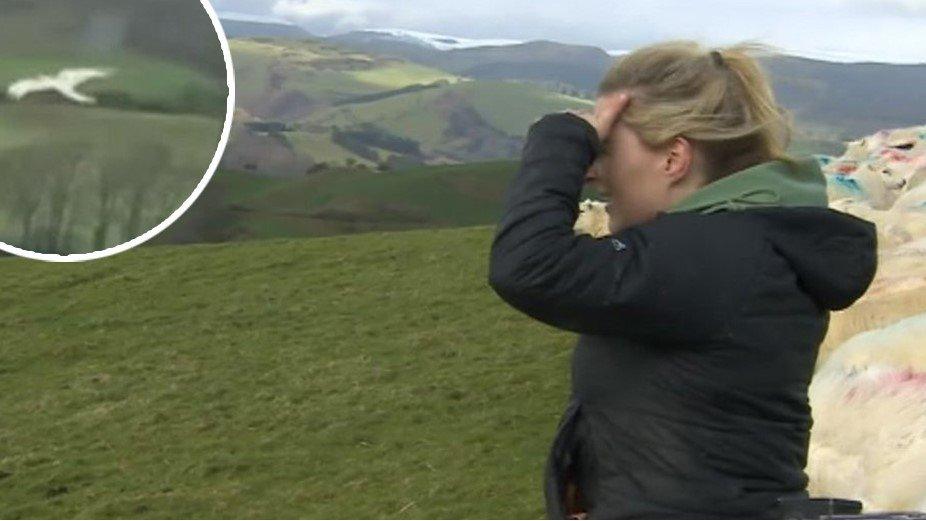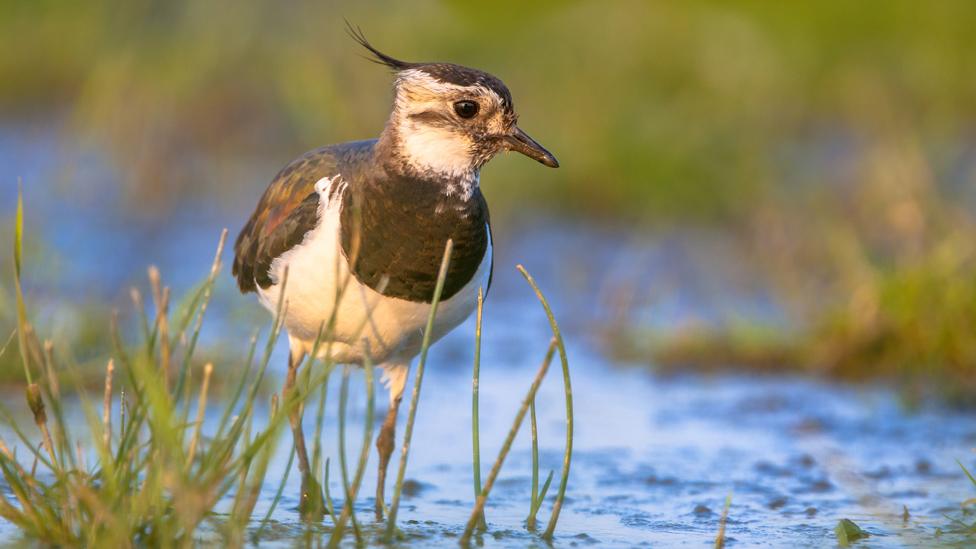Red kites: Wind farms 'unlikely' to halt species recovery
- Published

The red kite is protected under UK law
More onshore wind farms in Wales is unlikely to stop the recovery of red kite population, research suggests.
A study into the impact of onshore wind schemes had on the birds found numbers would likely continue to increase, though the rate of growth might slow.
Concerns have been raised over the effect the turbines would have on the population.
The UK has seen an decline in red kites, birds of prey that mostly feed on carrion.
They were once widespread but declined in the 19th Century, while just clinging on in mid Wales with a few pairs.
Numbers remained low until starting to recover over the last three or four decades, and there are now about 2,000 to 2,500 pairs in Wales, with the population continuing to increase.

Red kites are birds of prey that mostly feed on carrion.
A study led by the British Trust for Ornithology (BTO) and BSG Ecology modelled the potential effect of current and proposed wind farm developments, including those at an early stage, on the Welsh population of red kites.
It found that while commissioning the suite of wind farm projects currently in development might slow down the growth in the numbers of red kites, it was very unlikely to lead to national population declines in Wales.
But impacts were more likely in areas of high turbine density, which is relevant to two special protected areas (SPA) that have been designated because of their red kite populations.
The study said "greater caution" is justified for developments close to those areas, to minimise risk to their high density populations of red kites.
Callum Macgregor, senior research ecologist for the BTO and study author, said: "There's fairly good data that not many red kites get knocked out of the sky by wind farms, and most of them are quite good at seeing wind turbines and flying round them, though not all.
"Given the history of the species in Wales, there's understandably a precautious approach to anything that might harm that recovery."
Dr Macgregor said the study found "building these future wind farms that are in various stages of development will probably slow the growth, but it's not likely to slow it down so much that you end up with the population stabilising or declining".
In the Elenydd-Mallaen SPA in mid Wales, where there is a high density of red kites, there was a small possibility of the population declining if all planned wind farms were built, he added.

MOMENTS, MUSIC AND NOSTALGIA: Wynne delves into the archives of the 1980s
INSEPARABLE SISTERS: The seven-year-old conjoined twins who defied all odds

Related topics
- Published10 October 2023

- Published13 March 2019

- Published6 December 2018
